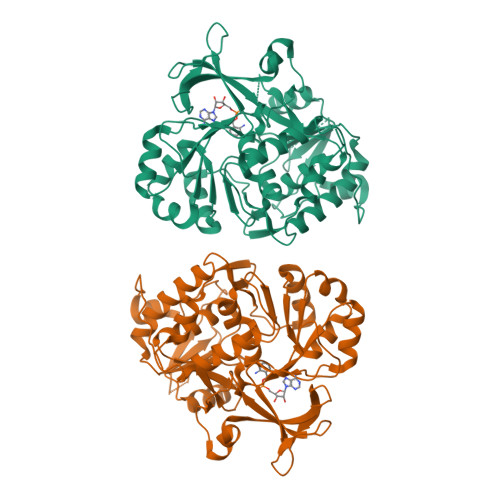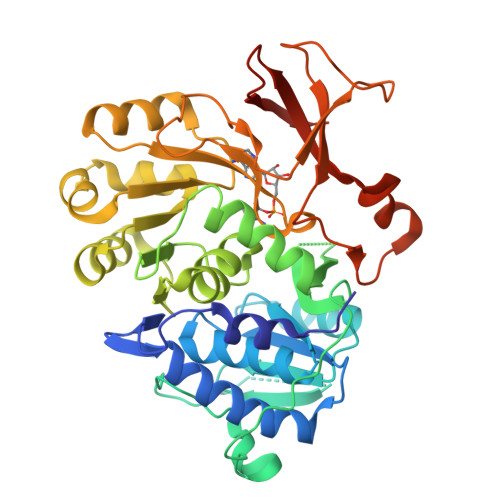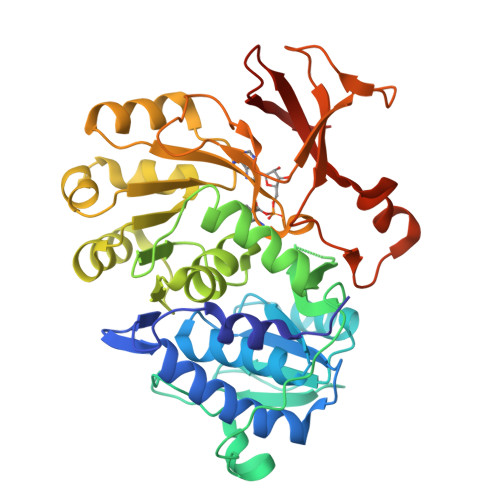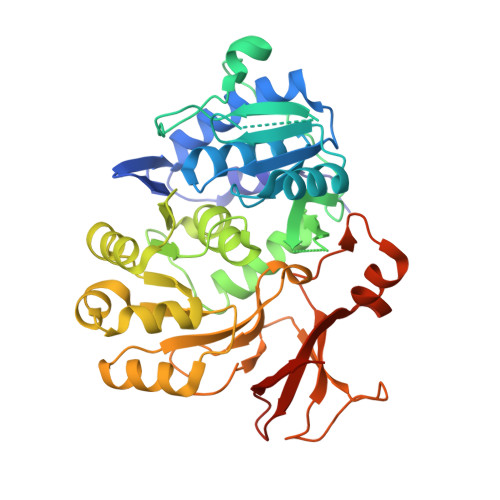Structures of the N-Terminal Domain of PqsA in Complex with Anthraniloyl- and 6-Fluoroanthraniloyl-AMP: Substrate Activation in Pseudomonas Quinolone Signal (PQS) Biosynthesis.
Witzgall, F., Ewert, W., Blankenfeldt, W.(2017) Chembiochem 18: 2045-2055
- PubMed: 28834007
- DOI: https://doi.org/10.1002/cbic.201700374
- Primary Citation of Related Structures:
5OE3, 5OE4, 5OE5, 5OE6 - PubMed Abstract:
Pseudomonas aeruginosa, a prevalent pathogen in nosocomial infections and a major burden in cystic fibrosis, uses three interconnected quorum-sensing systems to coordinate virulence processes. At variance with other Gram-negative bacteria, one of these systems relies on 2-alkyl-4(1H)-quinolones (Pseudomonas quinolone signal, PQS) and might hence be an attractive target for new anti-infective agents. Here we report crystal structures of the N-terminal domain of anthranilate-CoA ligase PqsA, the first enzyme of PQS biosynthesis, in complex with anthraniloyl-AMP and with 6-fluoroanthraniloyl-AMP (6FABA-AMP) at 1.4 and 1.7 Å resolution. We find that PqsA belongs to an unrecognized subfamily of anthranilate-CoA ligases that recognize the amino group of anthranilate through a water-mediated hydrogen bond. The complex with 6FABA-AMP explains why 6FABA, an inhibitor of PQS biosynthesis, is a good substrate of PqsA. Together, our data might pave a way to new pathoblockers in P. aeruginosa infections.
Organizational Affiliation:
Structure and Function of Proteins, Helmholtz Centre for Infection Research, Inhoffenstrasse 7, 38124, Braunschweig, Germany.




















